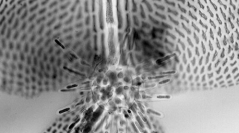

 Cryptogamie, Algologie
32 (1) - Pages 37-62
Cryptogamie, Algologie
32 (1) - Pages 37-62The red algal genus Caloglossa (Delesseriaceae, Ceramiales) in the New World is represented by Caloglossa leprieurii sensu lato. The earliest name for any species in the genus, other than the basionym Delesseria leprieurii, is Apiarium apiculum. On the basis of comparative morphological data, and rbcL and LSU rDNA sequence analyses, the C. leprieurii complex in the New World is found to include four species: C. leprieurii, C. apomeiotica, C. apicula comb. nov., and C. ruetzleri sp. nov. The four species can be distinguished by subtle vegetative characters, including rhizoid morphology, the degree of constriction at the thallus nodes, presence or absence of adventitious branches, number of cell rows cut off from the first axial cell of the main axis, and the position of the cystocarp on the blades. A dichotomous key highlights the diagnostic vegetative characters to separate species of the C. leprieurii complex that occur in the Americas. Caloglossa leprieurii is a tropical species from the Caribbean Sea, the Indian Ocean and the tropical eastern Pacific Ocean. Caloglossa ruetzleri is apparently restricted to the Caribbean Sea and the Gulf of Mexico, C. apomeiotica to the eastern Pacific and southern Atlantic Oceans, and C. apicula the Western Atlantic Ocean, Gulf of Mexico and Indian Ocean.